Educators Field Guide to Preparing for Web3: 3 Steps You Can Take Today, to be Ready for Tomorrow
Key Points
-
Though web3 is still in its infancy, there are trends emerging that can help guide us towards practices that can help us prepare young people for the next generation of the web.
-
In addition to learning about the technology, at least at surface level, educators can double down on the shifts toward learner-centered pedagogical practices to help prepare learners for web3.
-
These trends are most evident in the principles that are guiding the development of web3.
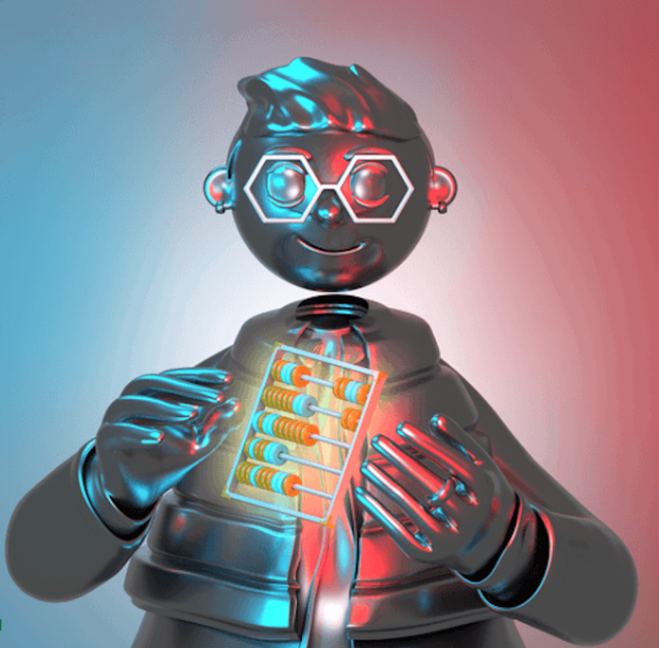
By: Mike Peck
With rapid improvements in computing power and mobile technology, access to the web has dramatically changed the way we live our lives. The static websites that marked the first generation of the web, web1, were simple but gave us new found access to information. This eventually gave way to the large platforms we are familiar with today like Youtube, Facebook, Instagram, etc. where we were able to not just read, but also write to the web in the form of videos, posts, pictures, blogs, and on and on. This era is widely known as web2, but as we’ve seen before, as technology changes so do the web. So what is web3 and more importantly for this conversation, how will this impact web3?
If we take a moment to consider the impact of the web on our lives, I think we can widely agree that the impacts have been profound on both a personal and professional level. It would make sense that future shifts in the web will have equally significant impacts, and so we can see the importance of helping prepare our young people where web3 is the future of entertainment, work, learning, and beyond.
In our previous posts with Getting Smart, we took a high level approach focusing on the technology making web3 possible and looking at ways the technology will provide new pathways for learning, earning, and living.
You can check them out below:
Three Ways Web3 Will Change Education For Good
What Can Decentralized Organizations Accomplish in Education?
In these articles we highlighted from a high level the opportunities that web3 can bring to education, but what does this mean for educators in the classroom? How can they prepare for a future that does not yet exist? In this article we aim to address these questions by looking at the technology and principles guiding web3, as well as some practical tips on how to prepare for the next generation of the web.
What are the key technologies in web3?
We discussed some of the technology supporting the next generation of the web in our previous post, but to briefly bring everyone up to speed, let’s take a look at some of the core components of web3 technology.
The key technology in web3 is the use of blockchain which is a type of distributed ledger. This technology enables us to read, write, and own our contributions, data, and other digital assets because the use of the blockchain allows for us to store, secure, or to transact any kind of data, without the need of intermediary platforms to store this data. This includes assets like NFTs and verifiable credentials (VCs), both of which are commonly known as images, but it is important to know they contain other data that makes them unique. Ownership of these assets
Both of these tools have enabled the creation of DeFi which is an open financial system not controlled by governments or other mediaries, bringing a new level of financial access to anyone with an internet connection. The metaverse is oftentimes understood as a virtual space, but I would argue that the metaverse is much broader than that encompassing any digital space that we live, work, and play in. While this technology has the potential to significantly change our world, it’s the principles that guide its growth that will determine in what direction it goes.
What are the principles guiding web3?
Broadly speaking we’ve picked a few key principles that are guiding the growth of web3.To try and help cut through the jargon that can oftentimes inhibit conversation, we matched the web3 term with a term or concept more widely used and understood in the education space.
They include:
- Decentralization and Trustlessness- Agency
- Interoperability and Portability- Ownership
- Community
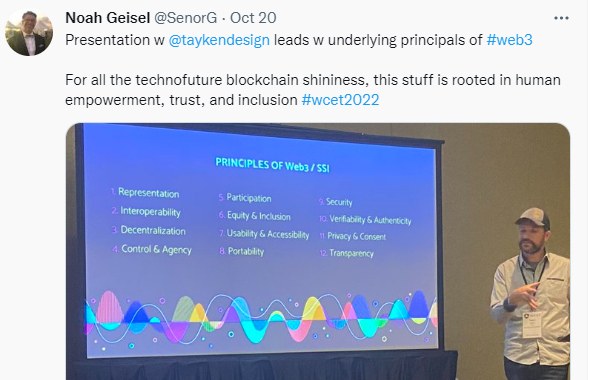
While the first two terms may be a bit new, the last one is deeply ingrained in the work that we do as educators. Let’s take a deeper look at these terms and see how they are guiding web3.
Decentralization and Trustlessness- Agency:
One of the core building principles of web3 is the idea that by using new technology like blockchain, we can return agency to individuals. Whether we talk about ownership of our finances, data, or content that we create, one of the promises of web3 is that we remove the barriers to individual agency.
This same idea isn’t new or foreign to most of us in education. In the last decade we’ve seen a growing interest in incorporating student voice and choice in the work they do. The rise in popularity of pedagogical practices or habits like 20% time, problem based learning (PBL), and using instructional strategies where learners can own their learning both in process and product speaks to this interest. Through these pedagogical practices we encourage learners to not only to explore content in new ways, but also gather skills that help them learn how to learn, and deal with complexity, keys for success in a rapidly changing world.
Interoperability and Portability – Ownership:
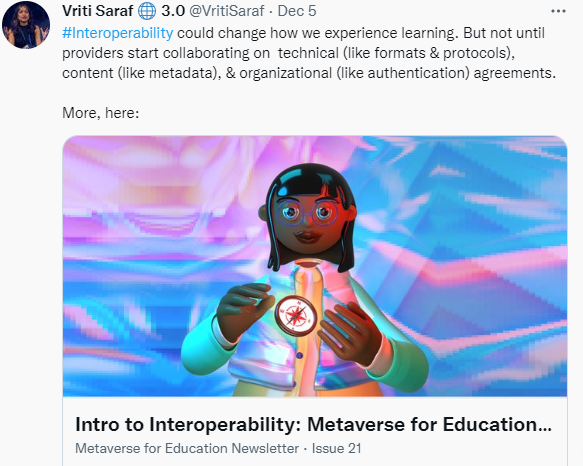
Much of the web today is owned by large platforms where what we do and create is captured and solely in the control of the platform. Have you ever tried exporting all your Facebook posts and putting them on Twitter? No, because it’s difficult, if not impossible. In web3 one of the core building principles is allowing for data interoperability and portability. Your data, your identity, your digital assets are yours and you can take them where you want to go. By using new technologies like blockchain we are enabling a new web that removes barriers to exchanging data and value online removing the control of platforms and financial institutions that control individual access to their services. Reducing friction in the flow of information and taking your data, assets, etc. where you want when you want.
In recent years, there has been a growing interest in providing opportunities for learners to own their learning. The systems that we’ve used to document and attribute learning to learners is antiquated at best. The use of report cards, GPA, and standardized test scores presents an incomplete picture of what learners know. In recent years, we’ve seen an increased emphasis on portfolio systems, digital badging, and other tools that acknowledge learners’ unique pathways that give them control and ownership of documented learning. This same shift can also be seen in higher education where the focus is moving away from standardized measures towards more holistic metrics like portfolios, interviews, etc. Providing opportunities for learners to create their own data backpack.
Community:
From the one-room schoolhouse to the school networks and districts of today, the community has always been at the center of education. Helping learners navigate the complexity of working together and sharing in the responsibilities of the learning community is as important today as ever given the fact we live in a globally connected society. Web3 shares the need for skills related to community building. Because of the peer-to-peer nature of web3 technologies, we are able to coordinate, work, and attribute value in new ways. Decentralized autonomous organizations or DAOs, are one example of this where contributors to an organization can also be owners of that organization.
Steps you can take today
So we looked at the tech and we looked at some of the core principles guiding the space, and as we can see there are some ideas that run parallel to each other in a way that could help educators and educational leaders prepare for the next iteration of the web. In this section we look at steps you can take today, to prepare for tomorrow. Let’s dive in.
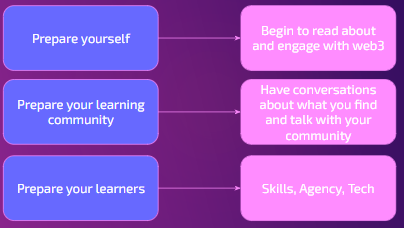
Prepare yourself
- Explore
- Preparing for web3 doesn’t mean one only should spend time learning about the space. For reasons outlined above it’s important that educators begin to learn about the space, but perhaps more important is expanding our thinking about the purpose of education.
- Engage
- There are a number of great resources to learn about web3, but it is important to take your time. At Ed3 DAO we have created space for educators from all backgrounds and interests to join in the conversation.
Some resources to check out here include:
- Join the Ed3 DAO Discord Community where you can connect with educators from around the world.
- Check out our Youtube Channel where we have a collection of Edtalks from the Ed3 unconference, which features leaders in both education and the web3 space.
- Follow us on Twitter or visit our website
- Sign up for the K20 Educators Metaverse for Education Newsletter where you will receive regular updates on the state of education innovation from the metaverse, to AI, to blockchain, and beyond!
Prepare your learners
- Preparing learners for a future that does not yet exist is challenging. As mentioned above, incorporating space for learner agency, ownership, and community building is a good start, but here are some additional ways we can prepare learners for tomorrow.
- “21st Century Skills” are a great place to start and something that many educators are familiar with. Lean into skills that are uniquely human and allow learners to explore their strengths and interests
- Supporting creativity not only helps those interested in creative arts, but also supports diverse thinking when approaching problem solving. Web3 has the potential to support new platforms and economic models that can support creatives of all types. On top of that, the uncertainty of the future is in the hands of those who can be creative problem solvers.
Help prepare your learners for the future of the web with these resources:
- The New Pathways campaign by Getting Smart has an excellent selection of thought provoking and mind expanding media surrounding how we support every learner on their unique journey. Some pieces I would highlight include
- Designing Student-Centered Experiences
- A thought leadership piece on the potential of web3 by the World Economic Forum
Prepare your community
- Preparing your community may look a bit different for each educator depending on their role in the learning community. However, regardless of your role there are some principles that you can include in your work that can benefit young people for the emergence of web3. They include:
- Providing space for learner agency
- Explore how we can create space for learners to bundle experiences in new ways.
- Explore new metrics for success in your classroom, your school, your school community.
Begin to prepare your community using some of the resources below:
- The Great Education Unbundling and How Learning will be Rebundled
- Town Hall Recap: New Pathways
- Community-connected projects with Trace Pickering of Iowa Big
In a world where much is uncertain, we can be pretty sure that the web will continue to play a significant role in our lives. By preparing ourselves and doubling down on efforts to shift towards learner-centered approaches to learning, we have a strong foundation on which we can prepare young people for web3.
Dr. Mike Peck (@edtechpeck) is a co-founder of Ed3 DAO, the first DAO for educators, by educators. He is also a technology leader at a public school where he works with administrators, teachers, students, and community members to leverage digital learning.
This post is part of our New Pathways campaign sponsored by American Student Assistance® (ASA), Stand Together and the Walton Family Foundation.





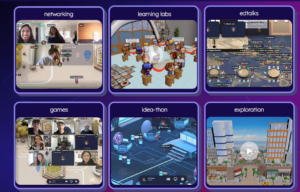

0 Comments
Leave a Comment
Your email address will not be published. All fields are required.